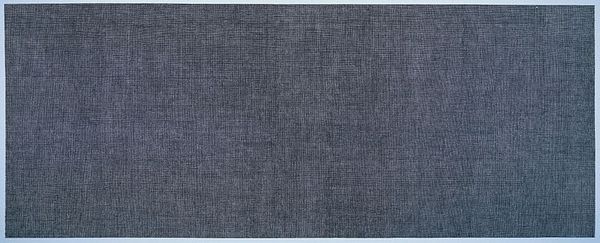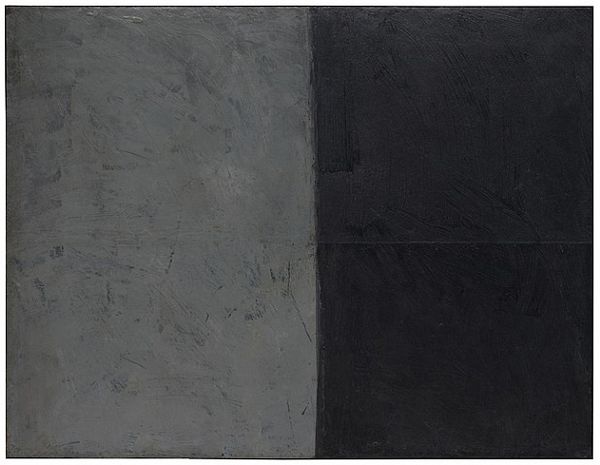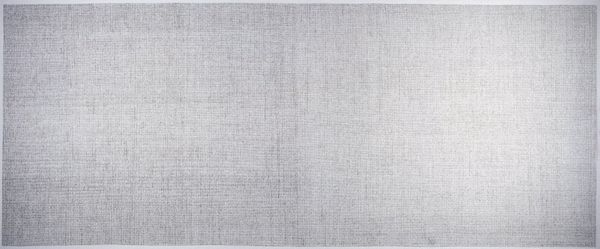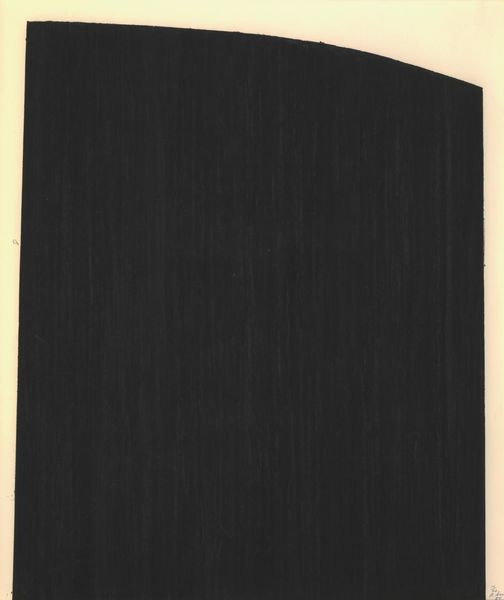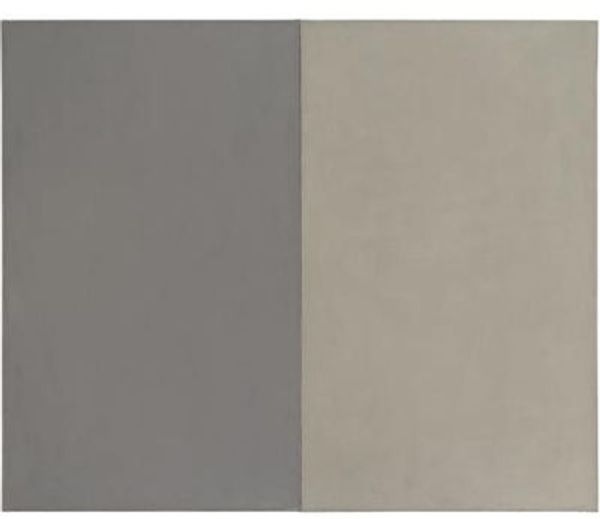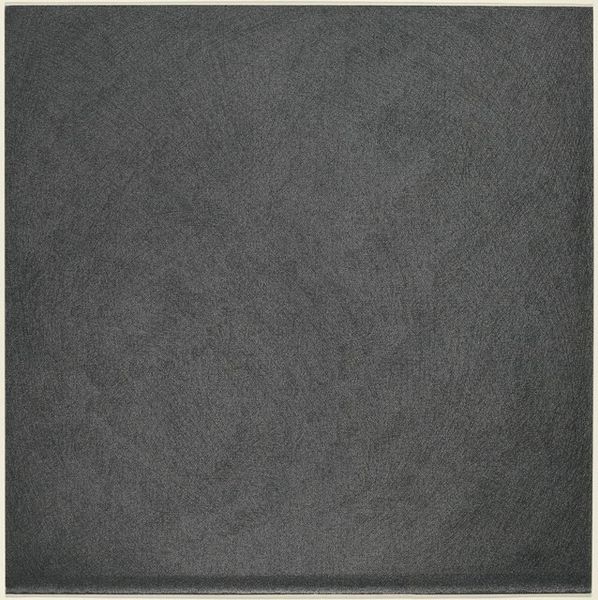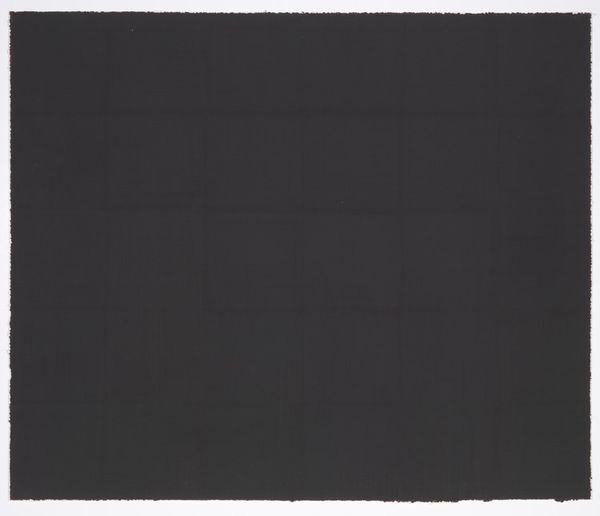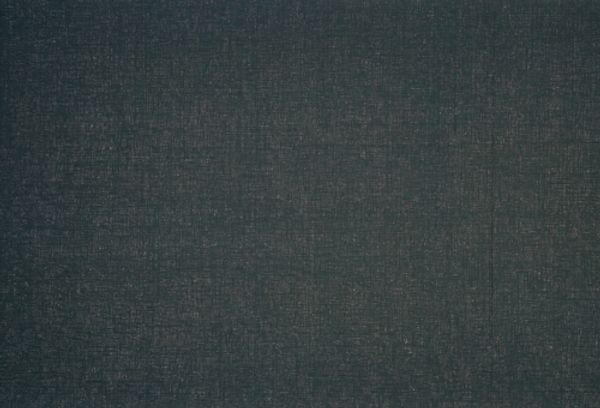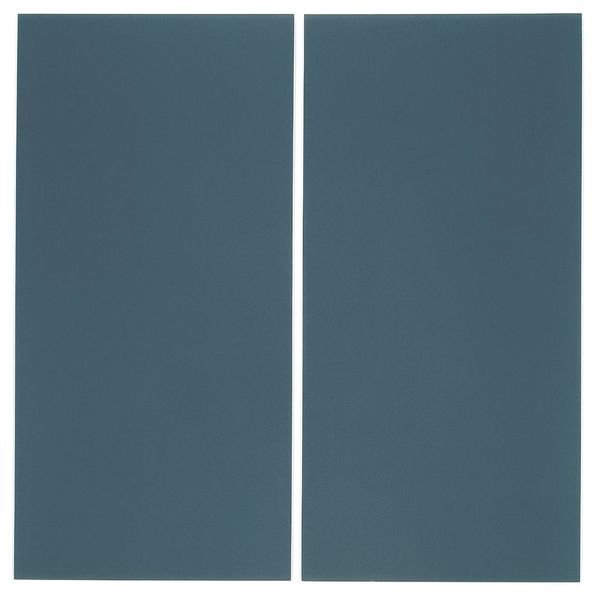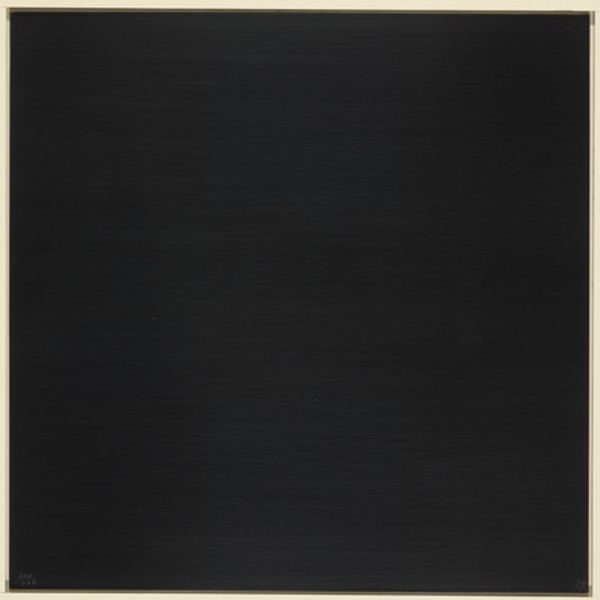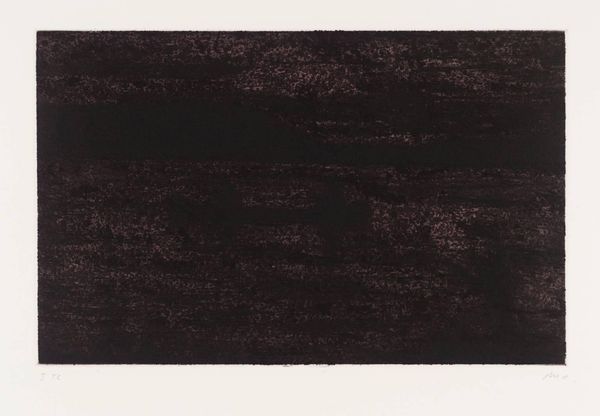
Black with White Lines, Vertical Not Touching 1970
0:00
0:00
sollewitt
Museum of Modern Art (MoMA), New York City, NY, US
graphite
#
conceptual-art
#
minimalism
#
abstract pattern
#
geometric-abstraction
#
abstraction
#
line
#
graphite
#
monochrome
Dimensions: 43 x 59 cm
Copyright: Sol LeWitt,Fair Use
Editor: Here we have Sol LeWitt's "Black with White Lines, Vertical Not Touching," created in 1970. It appears to be a monochrome drawing rendered in graphite. It feels... almost industrial in its repetitive, textured application of material. What are your initial thoughts on it? Curator: It's fascinating to consider the labor embedded within this seemingly simple piece. Graphite, traditionally a tool for sketching or underdrawing, here becomes the very substance of the work. LeWitt pushes the boundaries between drawing and, perhaps, a kind of constructed textile. How does its apparent uniformity relate to the intense, repetitive act of creation? Editor: That's a good point. It *looks* uniform, but you can also see the variation in the individual lines if you look closely, the very subtle imperfections of a hand-drawn process. Do you think he’s making a comment on mass production versus craft? Curator: Precisely. LeWitt challenges the very notion of authorship. He provides the *idea* and, sometimes, instructions, and others execute the work. What impact does that decentralization of artistic labor have on the finished product and its perceived value? Does it make it less “authentic?” Editor: That really makes you think about what we consider art. If the concept is the art, then the execution becomes almost a mechanical process. I wonder, though, about the role of the person actually applying the graphite to the wall. Are they just a machine, or does their interpretation also play a part in the artwork? Curator: That's the core tension of LeWitt's project: the interplay between the predetermined and the accidental, the idea and its material instantiation, and what is perceived when this interplay occurs, changing over time. The labor of art-making and the definition of art itself shift in a capitalist paradigm. I never thought about his art that way before this discussion! Editor: Me neither! Considering the piece from the perspective of production and labor gives it a totally different meaning. Thanks for sharing that.
Comments
No comments
Be the first to comment and join the conversation on the ultimate creative platform.
